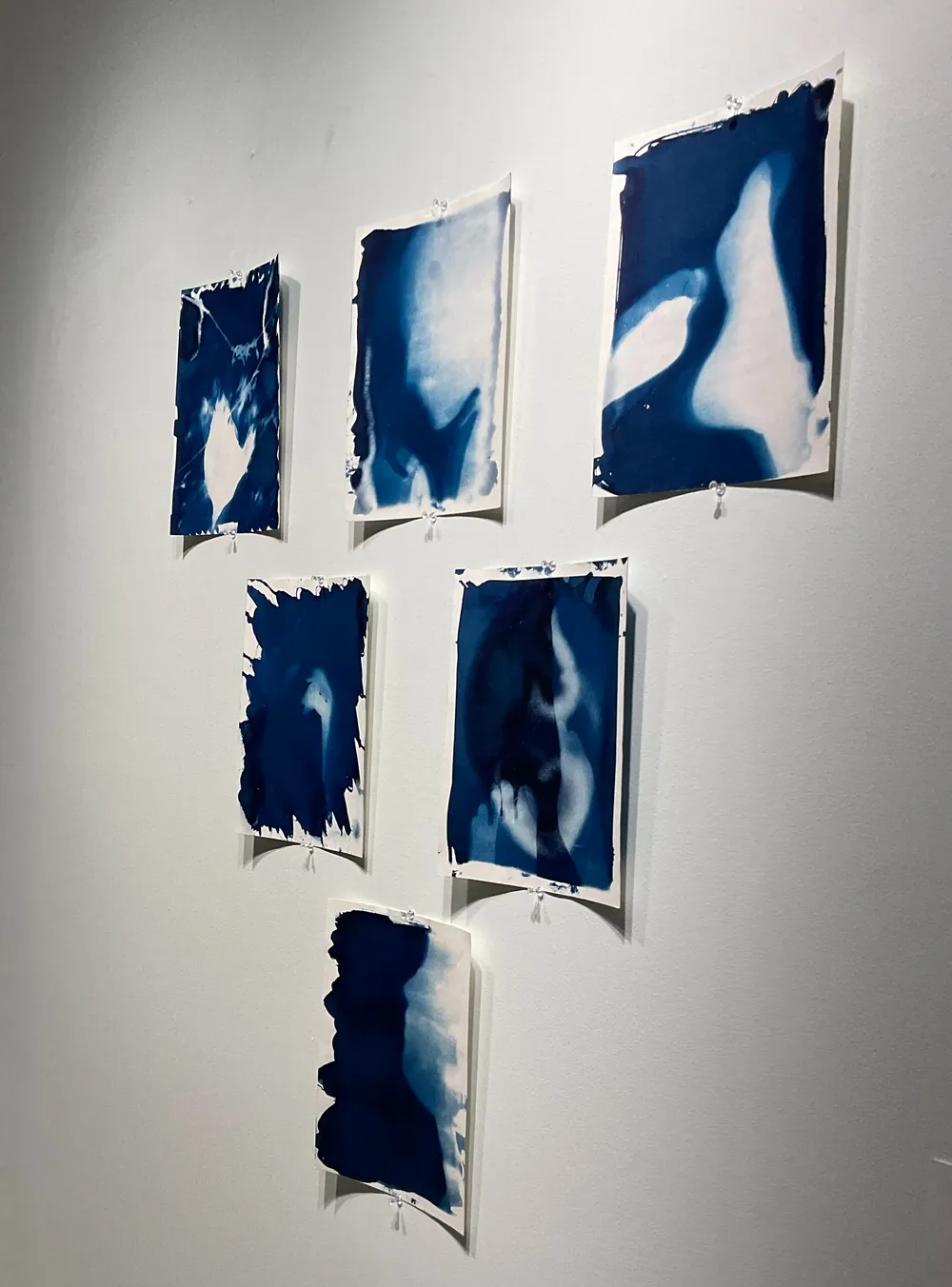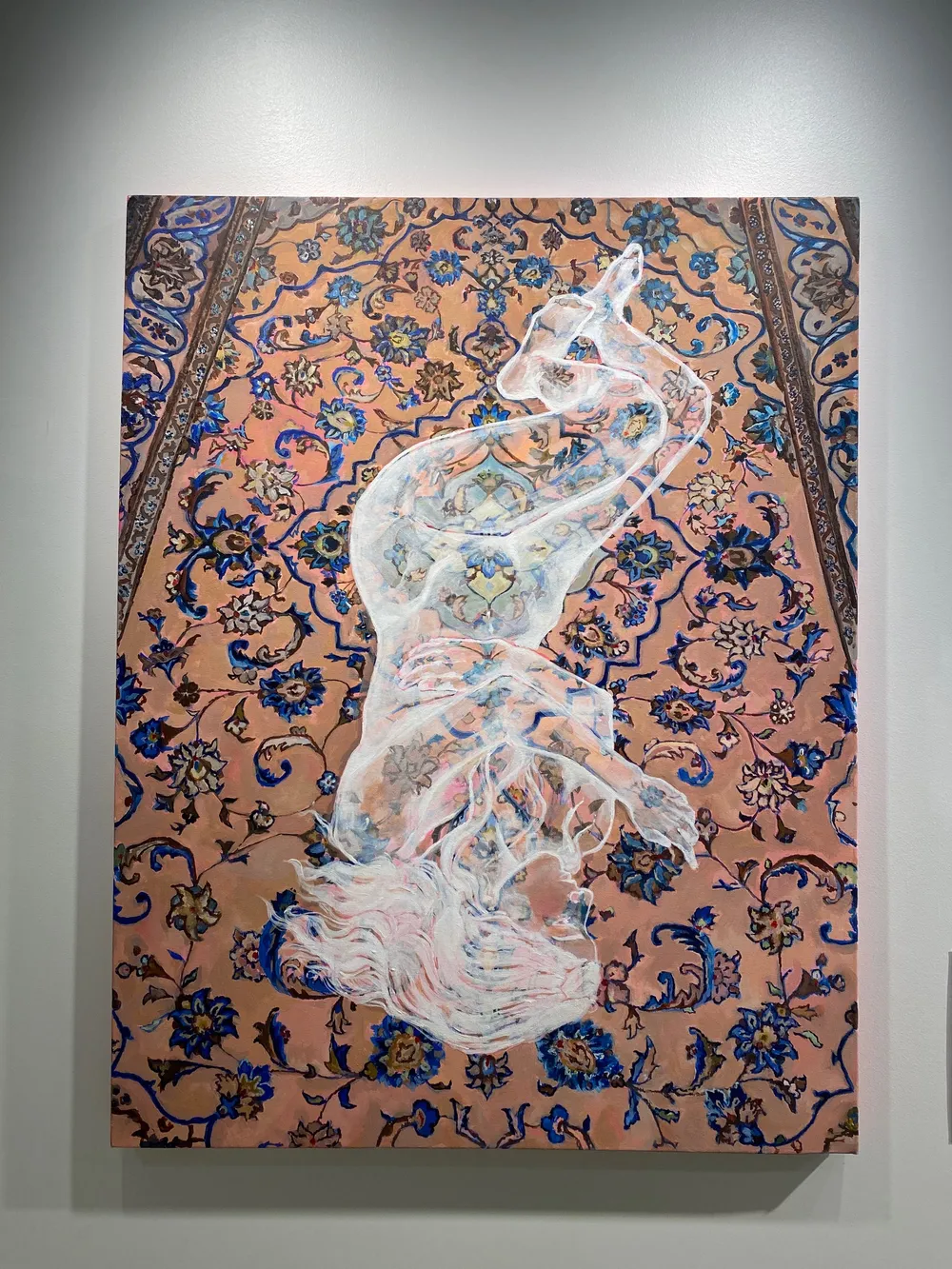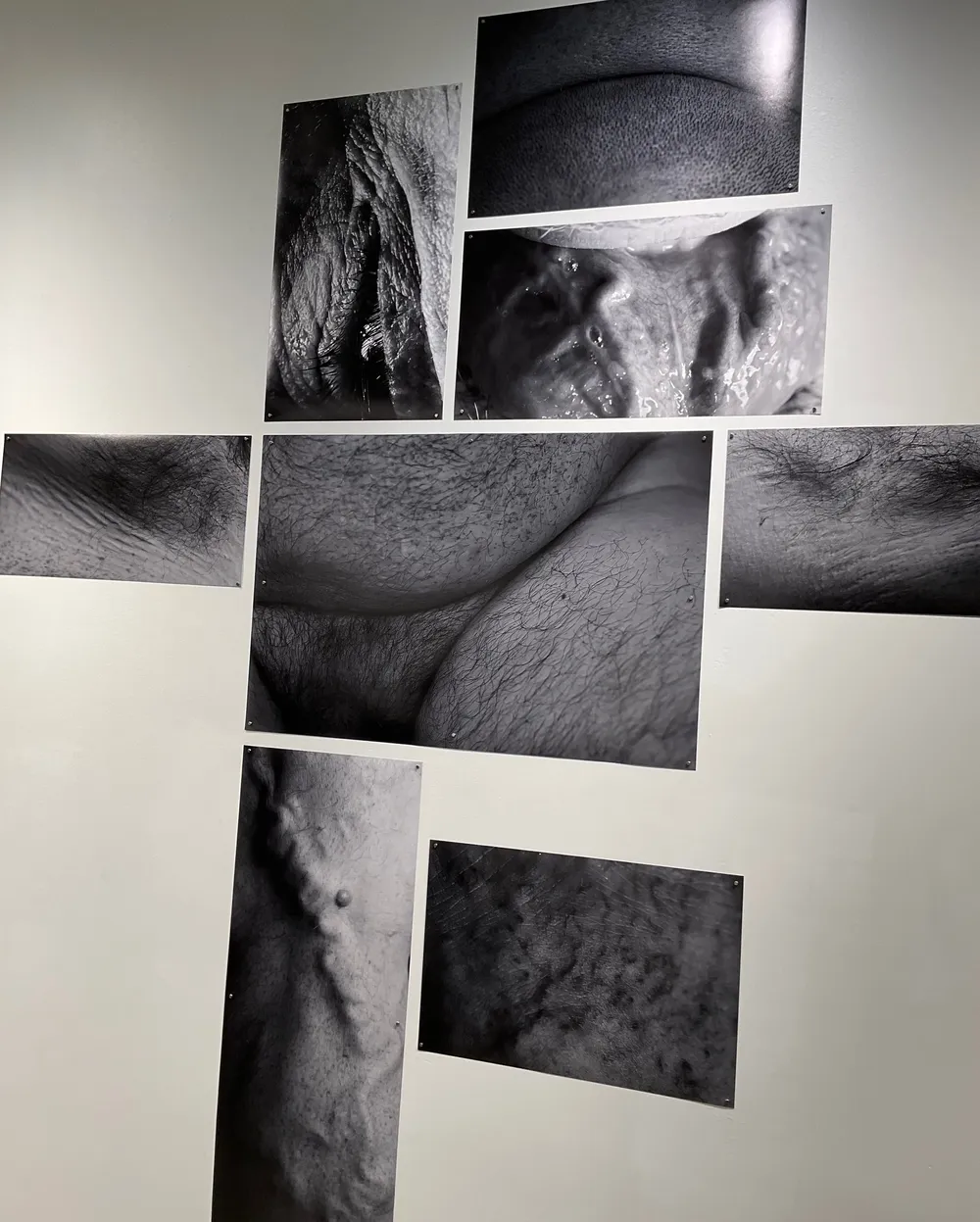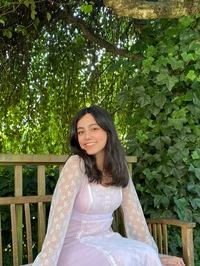Our bodies have always faced scrutiny and rigid societal expectations, and the Hatch Art Gallery's last exhibit which ran through mid-October, The Politics of the Body, showed a selection of artistic responses to reclaiming them through artistic practice. The Hatch is student-run expo space for contemporary artists to present a broad scope of art mediums.
The exhibit was hosted in partnership with UBC ARTIVISM, an art and activism festival which this year was curated by third year media studies student Helena Miranda Ventosa. The 2022 theme for Artivism was Politics of the Body and the Hatch exhibition explored this theme through multimedia student work.
“We wanted a focus on individual and collective experiences of the body for POC and the LGBTQIA+ community,” said Ventosa. “I wanted to give voices to students to express how they felt about their bodies in a free but also political way. [I hope people] reflect upon how often we forget about our bodies and how many experiences we have contained within them.”
These quotes have been edited for length and brevity.
"Human Blueprints" by Suchitra van Riel Barrel
Suchitra van Riel Barrett is a fifth-year student artist.
"These are cyanotypes. Cyanotype is one of the earliest forms of photography. It's a really, really easy process just two chemicals that you combine that are easily accessible at an art store. They create a photosensitive substance. You paint the substance in a dark room onto a sheet of paper, preferably a piece of paper that can hold water easily. Then you go out into the sun and lay something onto the print.
When it’s exposed to the sunlight, it will turn a bluish colour. Anything imprinted onto the sheet will stay white, a paler colour.
I wanted to use this method because I was getting really tired of quick snapshots. I wanted to take myself way, way back when you had to sit in front of the camera for twenty minutes and wait for an image to become exposed.
I wanted to play with the concept of time and reconnect with myself and my body to watch my image develop in front of me. Especially because you have to sit so close to the page you're practically touching it! And so I was sitting with the print as it unfolded with me… it was very collaborative and almost meditative. By sitting with the prints as they’re developing, you are forced into yourself because you can’t do anything. You can’t go on your phone, you can’t read, you just had to sit there and wait. And that's not something a lot of us do anymore… just doing nothing."
"Diaspora/The dispersion of bodies from their original homeland" by Kiana Shahnia
Kiana Shahnia is a fifth-year double major in visual arts and art history. Her piece explores the sense of diaspora as a Canadian-Iranian immigrant.
“I started off thinking about materiality and how connected humans are with materials…how objects we possess become an extension of ourselves."
I am an immigrant. I came here when I was five years old. So there was a lot of stuff, like toys, that got left behind before moving here. And then there are objects like the rug in the painting that we brought but didn’t get much use out of it, yet it becomes an item that holds a lot of meaning. It touches on the idea of the sense of in-betweeners… of simultaneously belonging and not belonging.
The body becomes the body of the carpet itself. It's ghostly to emphasize the feeling of not feeling present while it's still there, like the memory of something fading, something not really existing.”
"Vulnerability" by Justin van Westen
Justin van Westen is a UBC alum with a Master’s of Social Work. He works with Vancouver Coastal Health as a coordinator and educator for the BLUSH program (Bold Language For Understanding Sexual Health). The program approaches sex education through an intersectional lens, with the goal of decreasing the stigma and fear around sexual health.
“I completed this piece of eight photographs in the spring... I've been looking at unpacking and unlearning ways of toxic masculinity and exploring… where I can learn and where I can grow. And so I've been exploring what it looks like to be vulnerable.
This is a multifaceted piece, this is a capturing of a moment of vulnerability with another human being who photographed me. Creating space between the two of us allowed for vulnerability … It was actually an experience as opposed to a photograph set. But this photograph set captured the experience.
The work that I do in the world is in social justice and sexual health. Currently, I've been exploring what that looks like for bodily autonomy and consent. We've restructured what sexual health looks like in Vancouver, and Richmond, and have used directing programs to shift and teach, to step away and unlearn the aspects of entitlement in a patriarchal society. My practice allows me to do work that is vulnerable and allows me to be able to explore what happens within myself as the way of producing art.
The world is a fucking dumpster fire right now. It's run by white, religious people that] in many ways that are eroding our rights as human beings and erasing people that really matter in the world. Also, considering the colonial aspects of heteronormativity, patriarchy, and racism, all really limit human experience. The only way to be amazing, beautiful human beings is to be yourself to the best of your ability.”
ARTIVISM director Helena Miranda Ventosa was the photo editor for The Ubyssey's annual magazine in 2021/22. She was not involved in the writing or editing of this piece.
Share this article
First online









